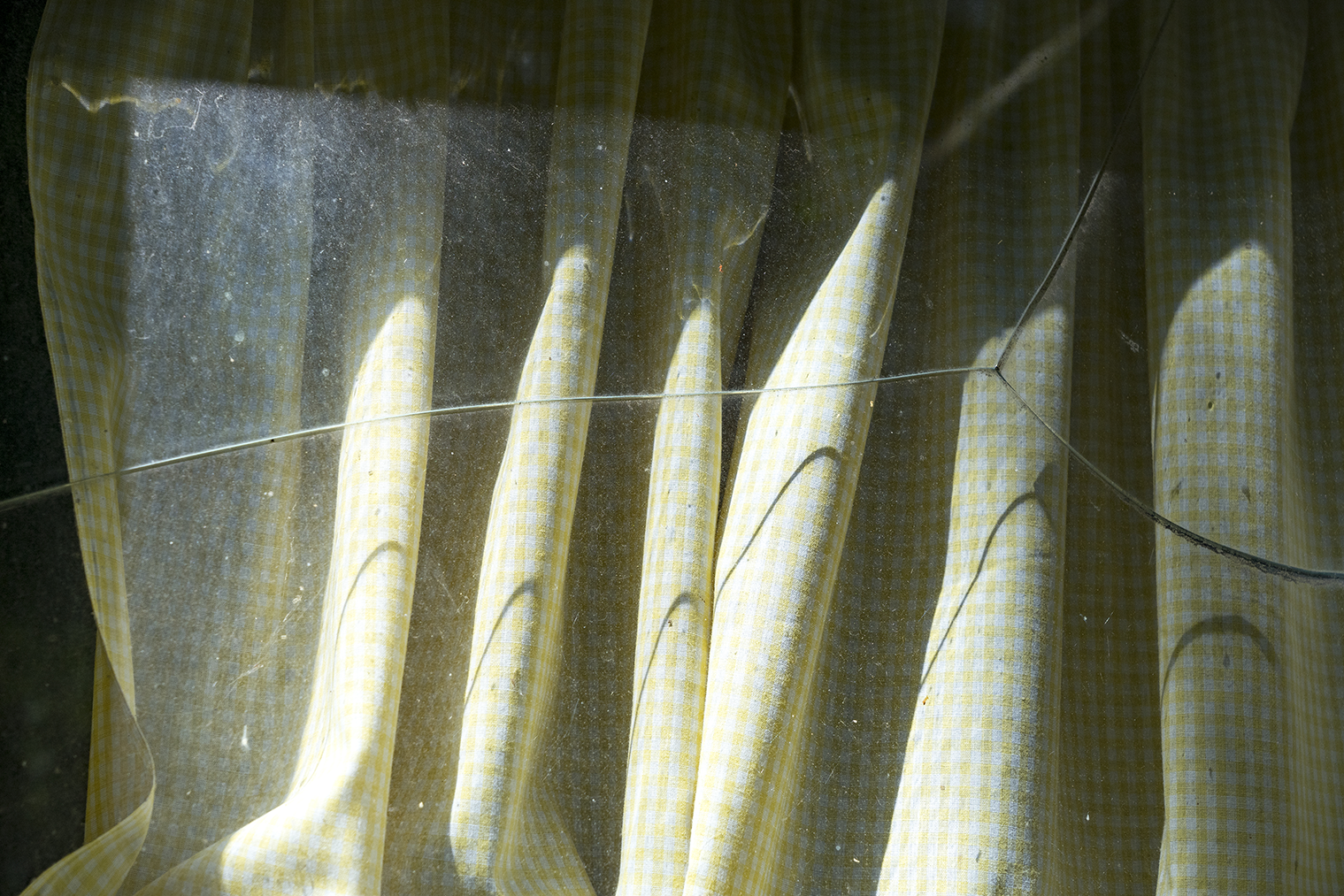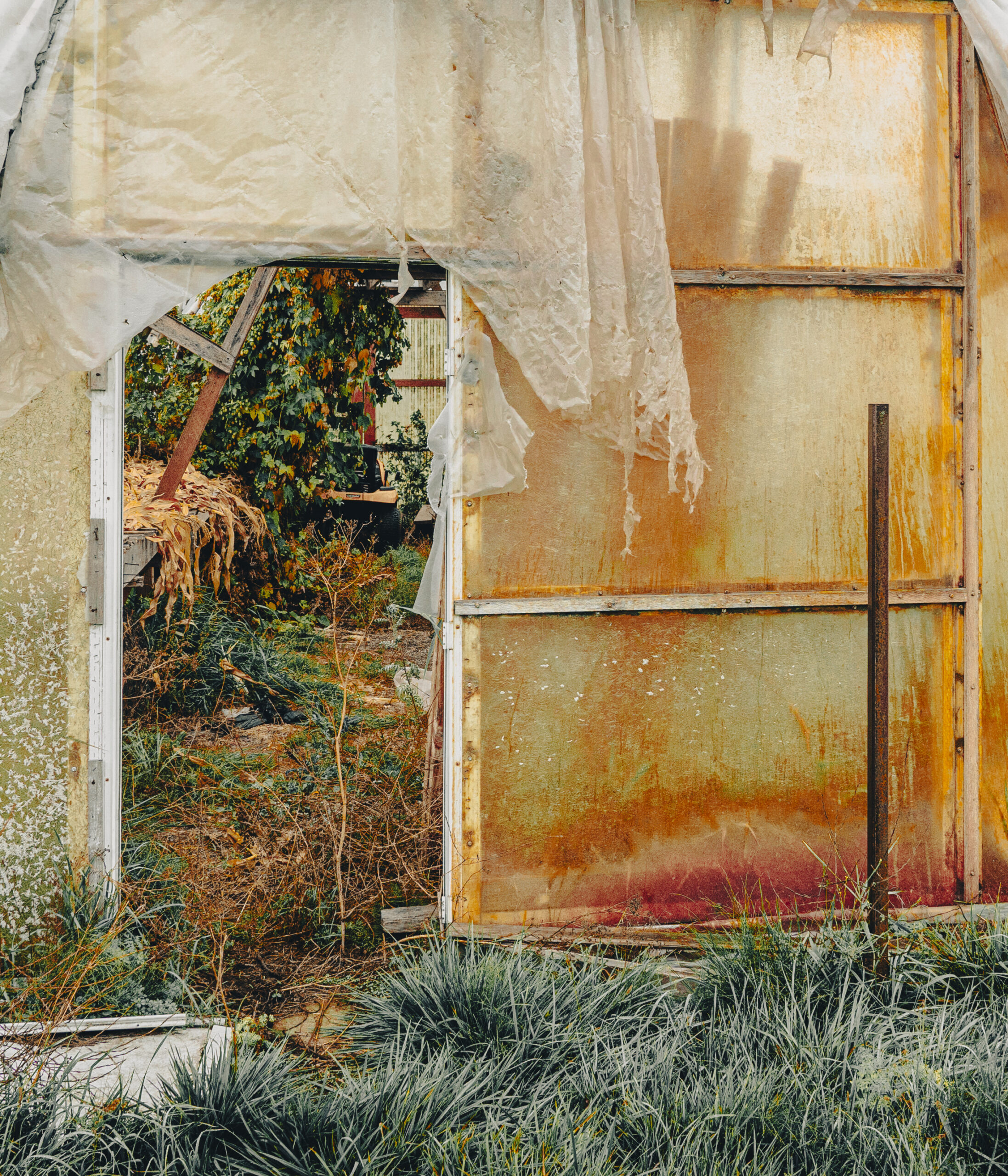Three Photographs by Richard Spang



I was first introduced to the study of psychogeography in a book by Robert Macfarlane. He defines it as “the effect of a place on human emotions and behaviors.” As an artist, I am attuned to locations that appear abandoned, overgrown, hidden, or hard to see. They usually have a door or a portal that I choose to include these in my compositions. I search for these places using Google Maps, looking for rectangular shapes of structures in wild areas. Most of my discoveries are found while driving back roads with camera and dog.
Each time I find a new place, I feel the excitement of discovery. I imagine the people who once lived and worked there, and think about what their lives were like. My emotional connection to my subjects may come from my age—76—or from growing up near farm country in southern Michigan, but these lost locations feel like refuges to me, hidden away places where the past survives. Through this process of seeking, finding, feeling, and documenting, my art becomes a visual representation of my personal psychogeography.
I live on Whidbey Island, and these photographs, each edited only for the mood I felt when present, were shot at three different locations around the islands and farm valleys of the Puget Sound, north of Seattle.
— Rich Spang
Richard Spang is a retired electronics technician and lifetime photographer. His work has been published by 1889 Magazine, Wildroof Journal, Beaver Magazine, Burningword Literary Journal, The Closed Eye Open, Reservoir Road Literary Journal, Willows Wept Review and others. Rich is also an avid reader and an obsessive gardener. Find him on Instagram: @spangrich.